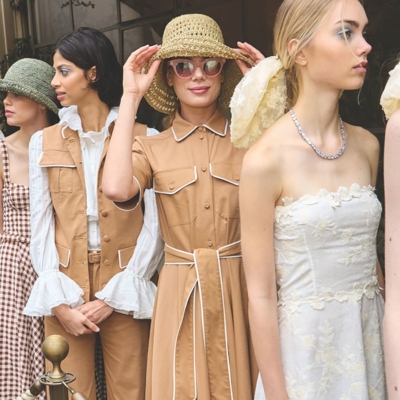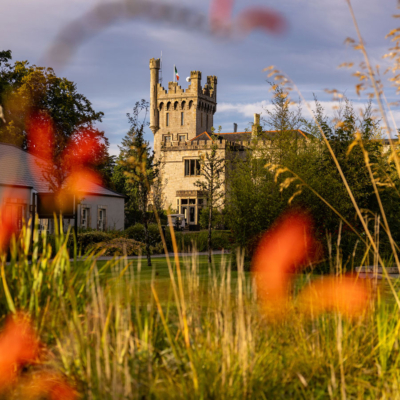Ilsa Carter, a native of New Orelans, takes the temperature of her city, in a week where she lost a family member to coronavirus and locals continue to struggle to cope with the outbreak …
On Good Friday 2020, after a full recovery from the coronavirus, the Archbishop took holy water collected from the river Jordan, where scriptures say Christ was baptised, and went up in a World War II era Stearman PT-17 biplane. His Excellency sprinkled holy water high above the city of New Orleans and its venerable Tulane University School of Public Health and Tropical Medicine. That tireless fighter of malaria, cholera, and yellow fever, originally founded with funds from the same consortium of banana importers that later backed a coup in Honduras. The Archbishop asked God’s grace and protection for Louisiana’s 22,000 confirmed cases of Covid-19. Before the death toll rolled over 1100, the Archdiocese cancelled masses until further notice. The same plane then flew young female Rabbi, Lexi Erdheim, age 29, up to offer her blessing over all who take shelter in the river’s bend. A Passover prayer.
How that hot air, overburdened as it is by 100 per cent humidity, carries those first faint strains so far, remains the ultimate mystique. In the New Orleans neighborhood known as the Irish Channel, the dirge approaches with the weight of a hurricane warning. A song so soul crushing, that it sends the O’Sullivans scrambling for a safe place to stand. A stolen glance from Nolan to Gallagher is a soundless confirmation of who’s still here. Brennan and Boyle push to the front for a better view. That striving rivalry is why we work. Slaughter, sacrifice and surrender are all part of the supernatural perks. Like winners in a round of musical chairs, the speed comes from our need to know for whom the baritone blows.
Long before we see the whites of their eyes, and matching uniforms moving in lockstep, you hear them. Black men belting a slug-slow version of St James Infirmary, sad as can be had, from a trumpet or trombone. Step aside. Stay out of the sousaphone player’s hair. Back up against the wall, because here come all those bass drums. Decked out in polyester suits and plimsolls, the whole bunch of ‘em sweating peripatetic percussions on something synthetic, akin to an animal skin, stretched over a big wheel. It gets real when you see yourself, reflected in that river of brass and stainless steel.
Louisiana’s most populous parish calls itself the Crescent City on account of being couched in a convenient curve of The Mississippi. Her creole colonists carefully planned their commercial hub on high ground. Fortunately or not, the Big Easy flourished far beyond their wildest conjectures. Its suburbs sprawl, face first in to a future of force majeure, with a federal government whose idea of aid is a drop in the bucket. We’re well within the grip of a watery grave.
Irish famine refugees, escaping their British overlords by boat from Liverpool, were welcomed in to the Port of New Orleans, and not subjected to the harsh reception at New York’s Ellis Island. No yankee quarantine for these future stevedores who would one day control the quays and save their coins to construct no less than five spectacular churches. The diaspora funded its first St. Patrick’s parade with a flurry of pipers and princesses throwing cabbages and kisses, in 1806. Irish dancing schools, a Gaelic football league and loads of pubs pervade the delta to this day. There exists, east of the city, an Irish Bayou, and in 2012, the Louisiana legislature designated the entire month of March as officially Irish.
In the New Orleans neighborhood known as the Irish Channel, the dirge approaches with the weight of a hurricane warning.
Eight blocks from a river precariously contained by the Army Core of Engineers’ ill-conceived and poorly maintained levees, lay St. Louis Cemetery #1. The burial ground slumbers on Basin Street, across from where Storyville’s saloons once stood. Revered for its plethora of pleasures, the notorious red light district would soon be demolished. Scores of old whores rejected for a new erection of affordable public housing projects.
Reclining in the aristocratic decay, behind their own crumbling walls, lie not just one, but three centuries-old cemeteries of elaborately designed stone vaults. Faultlessly built above the shifting silt, these patinated reliquaries entomb for eternity, the skeletons of a southern society. Enshrouded denizens include sugar plantation owners, pirates, civil rights leaders, chess champions, municipal mayors, and candidates awaiting canonisation. Last but not least, these reverse catacombs of our colorful past are haunted by a vaunted voodoo priestess, Marie Laveau.
To the tune of Just a Closer Walk With Thee, family and friends of the deceased, drag their feet following a hearse that carries the casket in question, to the departed’s final resting place, for a fitting farewell, where mourners are said to “Cut the body loose.” Unlike a burial at sea, where ballast is tossed, this is when any hint of lament will be lost to a raucous celebration. With a cathartic Congo Square-style strut, the protective spirits are appeased in a melding of polyrhythmic West African slave practices, underpinned by those of their European oppressors.
On that note, we admire the proctologist who can wrangle a tuppence from that cockwomble of a Trump administration. Small states like Louisiana left to bid against bigger, for gloves, gowns and other surgical gear. The sheer irony of a Mardi Gras Mecca unmasked, the wetlands from whence Tabasco flows, abandoned, and the Jazz Fest cancelled… are fair grounds for sedition. I kid you not. But as homeboy Truman Capote used to say, Don’t let me commence, lest my dirge digress.
Perhaps because of its frequent pauses, for fortifying refreshment in bars along the route, the Second Line is a long-winded freeform finale, in which a curious tour of town is taken. The brass band might strike up an irresistible rendition of When the Saints Go Marching In. This inevitably draws the second liners in to dance one hell of an ecstatic trance down the street behind the jazz masters’ now melting slaphappy hearts. Those who’ve forgotten their tambourines, snap their fingers and wave handkerchiefs high. Some spin parasols of purple, green and gold, welcoming people out of the shade and in to the parade. Just for the fun of it, quite a few join in the jazz funeral procession. It’s for someone they never knew. Somebody that could’ve been called Kelly, or Murphy or maybe something else. Doesn’t matter. What does is… they dance. Right up until that moment when they feel their own feet fail.
LOVETHEGLOSS.IE?
Sign up to our MAILING LIST now for a roundup of the latest fashion, beauty, interiors and entertaining news from THE GLOSS MAGAZINE’s daily dispatches.










